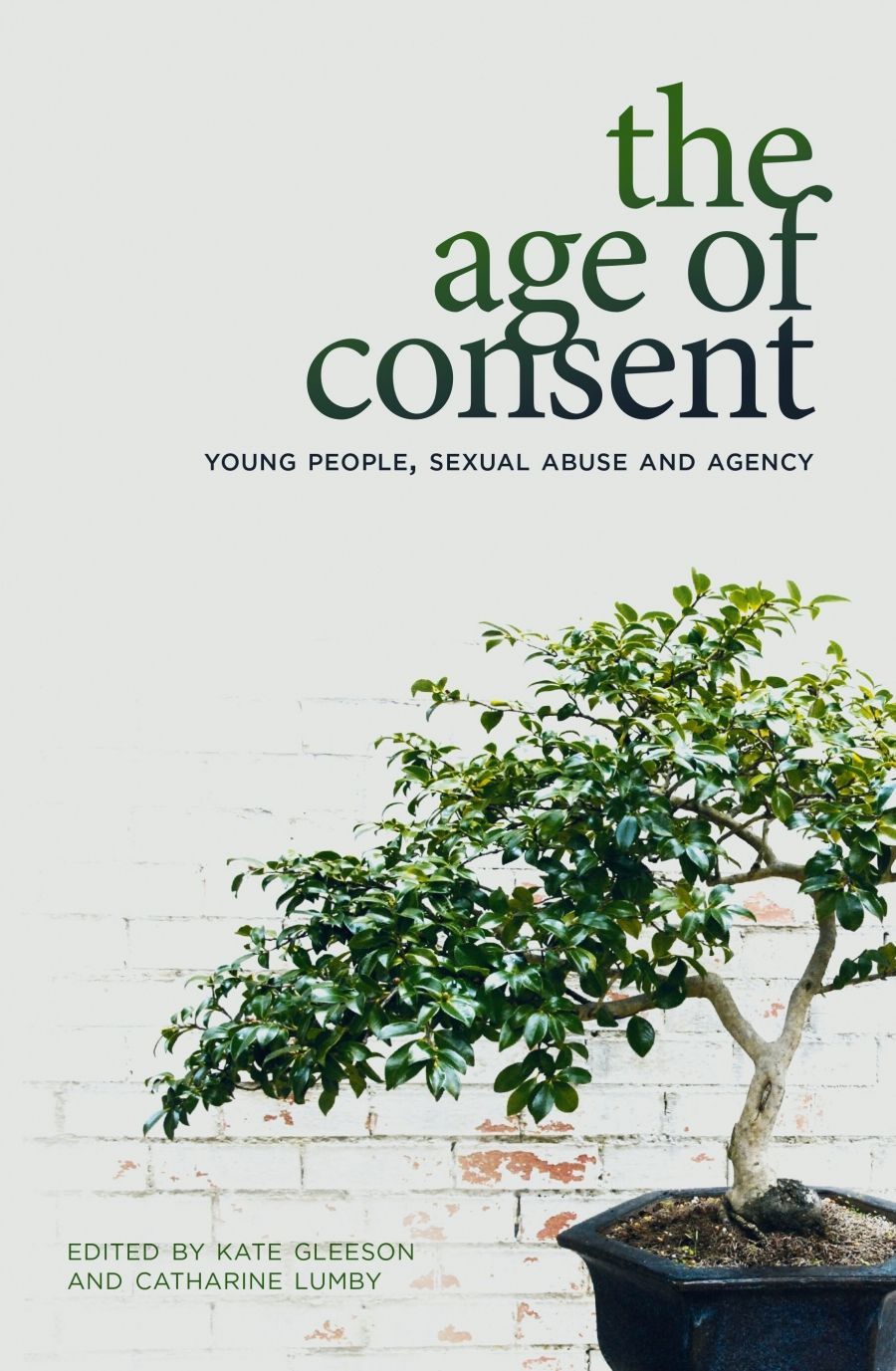
- Free Article: No
- Contents Category: Society
- Review Article: Yes
- Custom Highlight Text:
Much talk around the abuse of children centres on the desire (or demand) for justice. Unfortunately, justice is not easy to attain. To begin with, it tends to require a justice system. This introduces all manner of creaking bureaucracy and complicated, sometimes outmoded laws. Justice outcomes are also hugely influenced by race, gender, and inequality ...
- Book 1 Title: The Age of Consent
- Book 1 Subtitle: Young people, sexual abuse and agency
- Book 1 Biblio: UWA Publishing, $29.99 pb, 175 pp, 9781760800314
All seven chapters offer valuable insights – I will highlight just four here. To establish what children as young as eight think about sexuality, technology, and potential harms, Tobia Fattore does something unexpected: he asks them. Emphasising a theme that recurs throughout the book, he finds that, although young people are ‘rarely attributed the competence or reflexivity’ needed to evaluate the risks inherent in digital interactions, they in fact have a pretty nuanced understanding of the dangers involved. Murray Lee and Thomas Crofts come to a similar conclusion on alarmist responses to sexting, suggesting that the inner lives of young people are far more complex than adults typically credit. Unsurprisingly, the heedless rush to criminalise teen sexting has caused more harm than good.
Elsewhere, Terri Libesman and Hannah McGlade skilfully summarise the callous and contradictory treatment meted out to First Nations children since colonisation. They detail a history bedevilled by lies, ignorance, and ham-fisted interventions that have done virtually nothing to improve Indigenous lives. In their introduction, Kate Gleeson and Catharine Lumby note the astonishing finding of the child sexual abuse royal commission that ‘one in five of the survivors of residential abuse were Aboriginal’; yet our Indigenous policy responses remain mired in a hapless cycle of increased policing and more imprisonment. In an astute contribution titled ‘Sympathy for the Devil’ – the Rolling Stones reference is intriguing in light of infamous tales of rock musicians and their carnal associations with young fans – Kelly Richards stomps out the mythical connection between child victims and future offending by pointing out that ‘while most victims of child sexual abuse are female, most perpetrators are male’. She goes on to ask how much longer society will keep adhering to the myth of the ‘otherness’ of the child sex offender as a way of avoiding confronting deeper cultural issues.
The Age of Consent is not as bogged down in methodological strictures and formulaic language as writing in the social sciences frequently is. Its authors should be lauded for venturing at least partway across the mine-strewn no-person’s-land that separates much scholarly publishing from the public domain. Chapters like Zora Simic’s eloquent historical account of the nebulous, patriarchal age-of-consent concept provide a paradigm for differently located scholars writing in a way that fosters broader social engagement. Nonetheless, the book at times evokes a sense of academic distance. Laypeople who can actually find the thing still have to contend with all of the intellectual frolics involved: four hundred-plus endnotes; sporadic appearances of deathless action words such as ‘interrogate’ and ‘unpack’; the book asserting its own uniqueness through claims of challenging ‘received mainstream and scholarly ideas about how and why child abuse occurs’.
When it comes to the political urgency of confronting the power imbalances underpinning the repression and exploitation of young people, no one individual or group has all the answers. In this context, it is worth highlighting just how much deeply thought, culturally relevant writing on youth sexuality and maltreatment has in recent years been penned by quasi-academics and non-academics alike, including abuse victims. I gravitate here to the likes of Russell Marks in Overland and The Monthly, Una Cruickshank in Going Down Swinging, S.J. Finn in Overland, Andrew Pippos in SRB, and Bri Lee in Griffith Review, to name just a few.
While New Yorker critic Joshua Rothman is overstating the problem when he calls academic writing part of a system propelling everything ‘toward insularity’, it is nevertheless a system that needs bucking. Too much scholarly prose continues to lumber under the influence of a positivist disdain for the subjective and the poetic. There needs to be more lucid, visceral, even eccentric writing that can prove persuasive to specialists and neophytes alike. There is also scope for more publications to house scholarly and other authors under the same roof, where the different styles might begin to meld together as forceful agents for social change.
Doubtless some working in disciplines like criminology and the law would consider such calls mere anarchy loosed upon the world. But surely everyone who is researching and writing to redress social injustices or to better the lives of young people has the same objective of raising, to borrow Theodor Adorno’s wonderful image, the stone under which the monster lies brooding.


Comments powered by CComment